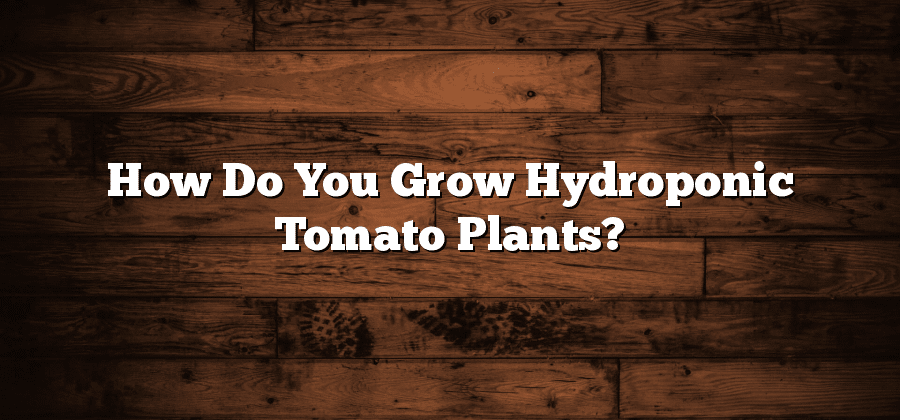Selecting the Right Hydroponic System
When it comes to hydroponic gardening, selecting the right hydroponic system is crucial for the success of your plants. There are several different types of systems available, each with its own unique advantages and considerations. One popular option is the nutrient film technique (NFT), which involves a shallow, sloping trough that delivers a continuous flow of nutrient-rich water to the plant roots. This system is highly efficient and allows for maximum oxygen exposure, promoting healthy root development and plant growth.
Another option is the deep water culture (DWC) system, where plants are suspended in a nutrient-rich solution with their roots submerged in the water. This system is known for its simplicity and ease of use, making it ideal for beginners. The aeroponic system is another innovative choice, using misters to deliver a fine spray of nutrient solution directly to the plant roots. This system allows for ample oxygenation and nutrient uptake, promoting rapid growth and higher yields. Additionally, there are drip systems, ebb and flow systems, and many more to choose from.
Ultimately, the right hydroponic system for you will depend on various factors such as the space available, your level of experience, and the specific needs of the plants you wish to grow. It is important to thoroughly research and assess each system’s pros and cons to make an informed decision. By carefully selecting the right hydroponic system, you can provide the optimal growing environment for your plants and set yourself up for a successful and rewarding hydroponic gardening experience.
Choosing the Ideal Tomato Varieties
Tomatoes are one of the most popular and versatile crops grown in hydroponic systems. But with countless tomato varieties available, how do you select the right one for your hydroponic setup? The key lies in understanding the specific characteristics and requirements of different tomato varieties.
First and foremost, consider the growth habit of the tomato variety. Determinate varieties, also known as bush tomatoes, are compact and stop growing after reaching a certain height. These varieties are ideal for smaller hydroponic setups or growers with limited space. Indeterminate varieties, on the other hand, continue to grow and produce fruit until they are stopped, making them suitable for larger hydroponic systems and experienced growers. Keep in mind that indeterminate varieties may require trellising or support structures to manage their vertical growth.
Another important factor to consider is the fruit size and flavor. Tomatoes come in a range of sizes, from cherry and grape tomatoes to larger slicers. Determine whether you prefer smaller, bite-sized tomatoes to enjoy as snacks or larger fruits for slicing and cooking. Consider the flavor profile as well, as some varieties offer sweeter or more acidic tomatoes, depending on your taste preferences and culinary needs.
Lastly, take into account the disease resistance and adaptability of the tomato varieties. Certain varieties are bred to be resistant to common tomato diseases such as Fusarium wilt, Verticillium wilt, or root rot. This can help ensure a successful and healthy crop, especially in hydroponic systems where diseases can spread more easily. Additionally, look for varieties that are known to thrive in hydroponic environments, as they may have specific traits that make them well-suited for this type of cultivation.
By carefully considering the growth habit, fruit characteristics, disease resistance, and adaptability of different tomato varieties, you can choose the ideal one for your hydroponic system. Remember, each variety has its own unique qualities, so take the time to research and experiment to find the perfect tomato that aligns with your goals and preferences.
Preparing the Hydroponic Growing Medium
Hydroponic gardening allows for the cultivation of plants without the need for soil. Instead, plants are grown in a *hydroponic growing medium* that provides the necessary support and nutrients for their healthy growth. The choice of the growing medium is crucial in determining the success of your hydroponic system.
When preparing the hydroponic growing medium, it is important to select a medium that effectively retains moisture and provides adequate aeration to the plant roots. One such medium is *coconut coir*, which is derived from the fibrous husk of coconuts. Coconut coir has excellent water-holding capacity and helps maintain a stable pH level in the root zone. Another popular choice is *perlite*, a lightweight volcanic rock that provides excellent drainage and aeration, allowing the roots to breathe. It is important to ensure that the growing medium is properly sanitized and free from pests and disease before use. This can be achieved by soaking it in a disinfectant solution and rinsing it thoroughly before placing it in the hydroponic system.
Providing Optimal Nutrient Solutions for Tomatoes
Hydroponic tomato cultivation requires careful attention to the nutrient solutions provided to the plants. Nutrients are essential for the tomatoes to grow and produce high-quality fruits. When selecting and preparing the nutrient solutions, it is crucial to consider the specific nutritional needs of tomatoes at different growth stages.
In the vegetative stage, tomatoes require higher levels of nitrogen (N) as this nutrient promotes rapid leaf and stem growth. Phosphorus (P) and potassium (K) are also important for healthy root development and overall plant vigor. The nutrient solution should be mixed according to the recommended ratios of NPK, ensuring that the concentrations are appropriate for supporting robust vegetative growth. Additionally, it is advisable to include micronutrients such as iron (Fe), manganese (Mn), and zinc (Zn) in the nutrient solution to prevent nutrient deficiencies and ensure optimal plant health.






